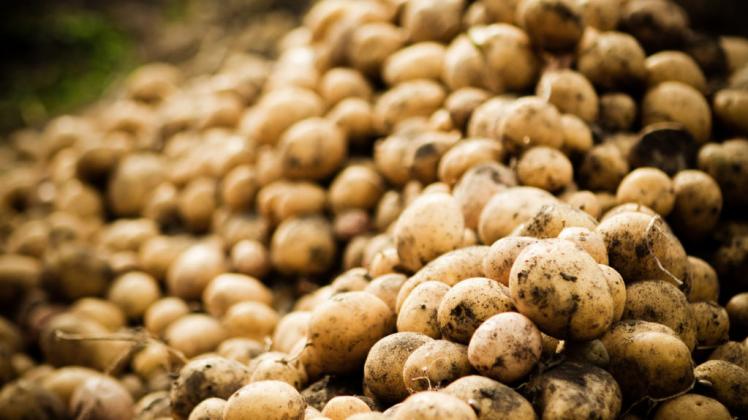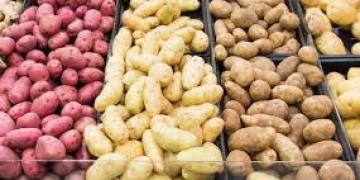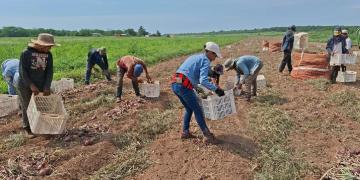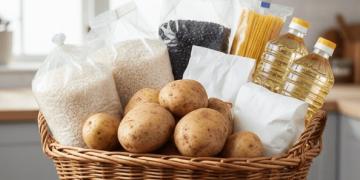EEUU: Best practice potato storage advice from University of Idaho researchers
Optimal storage practices start in the field and can hinge on a variety of factors and conditions, both with the tubers and inside their storage environment.

As we’ve seen this year with volatile processing demand, sometimes factors away from the farm can force growers to push the limits on keeping their potatoes still in storage at quality levels. It’s important for potato farmers to make sure their spuds and their storage equipment are in the best shape possible.
Nora Olsen, left, and Mike Thornton of the University of Idaho.
University of Idaho professors and Extension specialists Nora Olsen and Mike Thornton have done extensive research on potato storage during their careers. They offered some timely best practice tips and for tubers as harvest approaches for many farmers.
Is there an optimal internal tuber temperature for harvesting potatoes that are going into storage?
The general recommendation is to harvest between 45 and 65°F pulp temperatures. This range in temperature is wide to encompass conditions to minimize quality concerns resulting from shatter and blackspot bruise and disease and to provide the ability to remove heat from the potatoes in a timely manner. These are not absolute temperatures but merely a reference to indicate the potential risks to quality if harvested with temperatures outside the range. Not all varieties will respond the same to these temperatures. For example, a variety susceptible to blackspot bruise should avoid being harvested at the lower range of the recommended temperatures. Other varieties may be more susceptible to Pythium leak and should not be harvested warm.
What is the most common harvest-related mistake you encounter that leads to problems in storage?
Weather is not always conducive to perfect harvest temperatures or conditions, therefore we may have to harvest in sub-optimal conditions. This may lead to a higher risk for quality issues and greater management needs in storage. There are actions both in the harvest and handling of the crop and in-storage to mitigate the risk even when dealing with sub-optimal harvest conditions. Not responding or reacting to the higher risk by changing management can lead to additional problems in storage.
Any advice on storage facility preparation?
Once the storage is filled you are relying upon sensors and your own observations in the storage to manage the crop. Utilizing any and all tools available to help monitor the crop is a great advantage to better understand what is happening in this football field of potatoes piled 18 feet high. Ensure all your tools — especially temperature and humidity sensors — are working and properly calibrated. Temperature calibration is extremely important since the storage is ventilated and managed off these values.
What pre-storage question do you hear most often?
A common question is where to take pulp temperatures of the crop so you know when you should shut down the harvest operations. The answer is dependent upon the harvest conditions. For example, to manage for handling bruises, it is best to use the temperatures of the potatoes either just about to be harvested or sitting in windrows — this would be the lowest temperatures the potatoes are at as they start to get handled and potentially bruised. If there is concern for too high of temperatures, which can make cooling down the potatoes in storage more difficult, then be aware of the pulp temperatures loading into storage. Potatoes can easily warm up between harvest, trucking and piling into storage, and having information on temperatures at both the field and at storage will help decide when to stop harvesting. Knowing those temperatures going into storage also is vital to manage the incoming crop and how to decide on set-points and ventilation strategies.
Is there any recent research that could potentially change harvest or pre-storage practices?
There are so many varying conditions and moving parts that can impact quality, and then add on the variety susceptibility component, it can be a constant battle for the industry. Research information is providing tools and data to empower the industry to tailor operations to be aware of the conditions that impact quality and to make changes to the crop or equipment as harvest progresses. Some of the latest research:
Shows ability to use an iodine stain to easily see fresh shatter bruises;
Suggests sampling within a few hours of harvest to see where at least the majority of the blackspot bruises are coming from to make adjustments; and
Shows that certain varieties may need a different harvest protocol.
Fuente: https://spudman.com/article/best-practice-potato-storage-advice-university-of-idaho-researchers/




